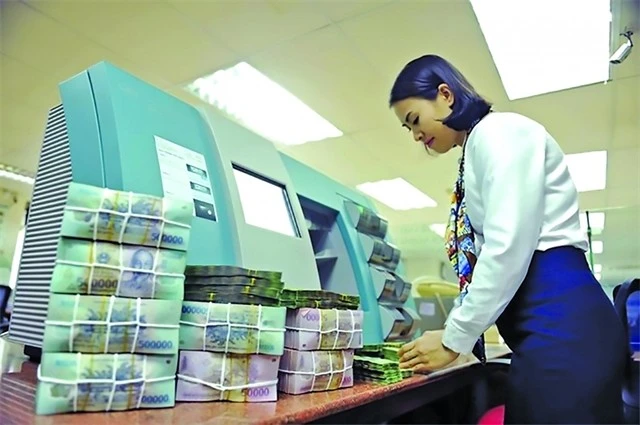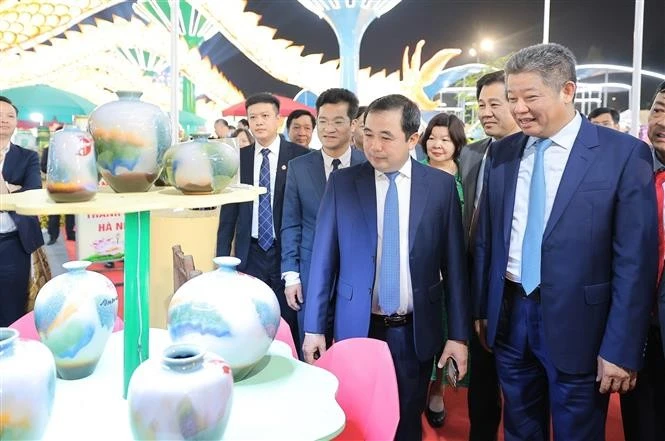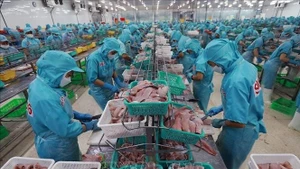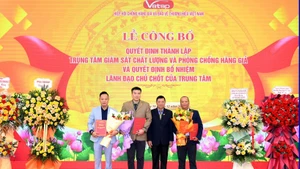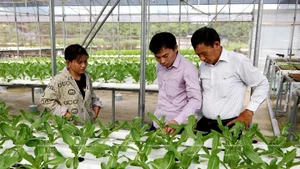However, for SOEs to truly fulfil this mission, institutional frameworks, mechanisms and management models must undergo stronger, more comprehensive and flexible reforms.
Focusing on core enterprises
According to Minister of Finance Nguyen Van Thang, SOEs currently play a dominant role in many essential sectors of the economy, such as energy, transport infrastructure, logistics, telecommunications, and finance–banking.
By the end of 2023, the country had 671 state-owned enterprises and 142 enterprises with state capital contribution, with total assets amounting to 4.19 quadrillion VND (approximately 160 billion USD), owners’ equity of nearly 2 quadrillion VND (76 billion USD), and pre-tax profits of nearly 243 trillion VND (9.2 billion USD). Although asset and investment growth rates remain modest, the efficiency of capital use and the contribution of SOEs to the state budget have been remarkable.
Dr Nguyen Duc Kien, former Head of the Prime Minister’s Economic Advisory Group, noted that over the past three years, while the FDI sector showed negative growth trends, SOEs outperformed in revenue, profit and tax contributions. Capital volume has not risen significantly, but capital efficiency has improved greatly. This is a positive sign that deserves recognition. However, to make the most of these resources, the key lies in reforming SOE governance, he said.
“We should pursue reform by introducing modern corporate governance into SOEs, rather than focusing solely on capital scale or asset growth,” Dr Kien emphasised.
Agreeing with this view, Trinh Xuan An, Standing Member of the National Assembly’s Committee for National Defence and Security, stated that although there are only about 700 SOEs, they contribute up to 30% of GDP. We need special mechanisms and clear classification to prioritise the development of core enterprises such as Viet Nam Airlines, Viettel Group, and VNPT. We cannot treat all SOEs equally. Pillar enterprises should enjoy special mechanisms regarding capital, charters and autonomy, since every adjustment to charter capital currently involves complex and time-consuming procedures,” An stressed.
Experts also concur that it is essential to have specific mechanisms and clear classification to focus on developing key SOEs like Viet Nam Airlines, Viettel Group, and VNPT. They further highlight the need to research and establish a model of “fully autonomous state-owned enterprises” — referring to SOEs capable of operating flexibly under market mechanisms, maintaining competitiveness while still fulfilling socio-political missions.
The public–private connection in aviation
Among SOEs, Viet Nam Airlines stands out as a typical example of a multi-functional state-owned enterprise — operating effectively on a commercial basis while performing political, diplomatic and defence missions during critical periods such as epidemics or natural disasters. With a comprehensive air transport ecosystem, a modern fleet, and an extensive network, Viet Nam Airlines serves as the “backbone” of the national transport system, while also promoting tourism, logistics, and international connectivity.
However, to enhance competitiveness and achieve sustainable growth, it is vital to strengthen ecosystem linkages among SOEs within the aviation sector. “We need to solve the problem of cooperation among enterprises in the same sector to form a national spearhead — a strong aviation group capable of competing regionally and globally,” suggested Dr Nguyen Duc Kien.
Trinh Xuan An also pointed out an important new perspective on the public–private relationship in this sector: “The notion that the State does only what the private sector cannot do is outdated. Today, SOEs and private enterprises can fully cooperate towards shared development goals. In aviation, the coexistence and growth of Viet Nam Airlines alongside private airlines clearly demonstrate this.”
According to An, the relationship between SOEs and private enterprises should no longer be viewed as “head-to-head competition” but rather as “mutual support and synergy.” This is particularly true in aviation — an industry requiring large-scale investment, synchronised connectivity, and flexible operations to meet both economic–social development and national defence–security needs.
Nevertheless, for SOEs like Viet Nam Airlines to collaborate effectively with the private sector, they must be granted greater autonomy — particularly through the removal of institutional and legal overlaps. “We have already ‘cleared’ the laws — including the Law on Management and Use of State Capital, the Law on Investment, and the Law on Bidding — but to make them truly ‘open’, competent authorities must continue to address conflicts and overlaps among these regulations. Otherwise, enterprises will struggle to realise their full potential,” An emphasised.
Positive growth figures and practical experiences from core enterprises such as Viet Nam Airlines demonstrate that the state-owned sector remains a pillar of the economy. Yet, for SOEs to truly lead key industrial sectors, policymaking must adopt a new vision — introducing special mechanisms, avoiding uniformity, and focusing investment on selected strategic priorities.
Furthermore, as the aviation industry illustrates, strengthened public–private cooperation represents a promising direction: SOEs and private enterprises can indeed “join hands” on the path of development, rather than competing against each other. With appropriate policies, sufficient flexibility, and consensus among the National Assembly, the Government and the business community, SOEs can genuinely become the “locomotives” propelling Viet Nam forward in its journey of industrialisation, modernisation, and global integration.

